Sony Xperia 10 V review: Long-distance runner
The Sony Xperia 10 V is the Mo Farah of modern smartphones—humble, honest, admirable, and ready to go the extra mile (pun intended). Sony found a great budget niche in 2019 and filled it with the equally great Xperia 10. The company has been perfecting its budget offerings ever since, and the Xperia 10 V now sits on top of that evolutionary tree.
So, without further ado, let’s dive deep into the genetics of this long-distance runner.
What’s new about the Sony Xperia 10 V?
- 1.5x brighter display outdoors
- 1.6x larger image sensor
- Front stereo speakers
- 3 years of future proof battery
- Corning Gorilla Glass Victus on the front
Table of Contents:
Sony Xperia 10 V unboxing
Barefoot running
Sony is very proud of its Road to Zero initiative, which, in short, has the goal of reaching zero carbon emissions. The retail box of the Sony Xperia 10 V is very Spartan-like; it contains just the phone and nothing else. The box itself is made from 100% recyclable cardboard.
At first, I was pretty skeptical about this idea of removing accessories to save the planet (how about offering 5 years of software support instead, cutting electronic waste, and making people hold on to their phones?) but looking at all the cables and chargers lying around at my house, I’m starting to get the point.
Sony Xperia 10 V specs
Epigenetics unlocked!
| Specs | Sony Xperia 10 V |
|---|---|
| Size and Weight | 6.10 x 2.68 x 0.33 inches (155 x 68 x 8.3 mm), 5.61 oz (159.0 g) |
| Display | 6.1″ OLED, 60Hz, HDR |
| Processor | Snapdragon 695 5G SM6375 (6 nm) |
| RAM, Storage | 6GB, 128GB |
| Software | Android 13 |
| Cameras | 48MP main camera, 26mm, f1.8 8MP telephoto, 54mm, f2.2 8MP ultra-wide, 16mm, f2.2 |
| Battery Size | 5000 mAh |
The Xperia 10 V has the same gene pool as its predecessor but has unlocked some epigenetic traits that make it even more desirable. If we leave the biology analogy for a second and talk pure specs, the Xperia 10 V now comes with front-firing stereo speakers (a rarity at this price point), a 1.5x brighter display, a bigger main camera sensor, a lighter body (albeit only by 2 grams), and Corning Gorilla Glass Victus on the front.
The phone has the same Snapdragon 695 5G chipset as its predecessor, and the battery is again kept at 5,000 mAh. The memory configuration is 6GB/128GB and…wait for it… there’s a microSD card slot supporting cards with up to 1TB capacity. Oh, and the 3.5mm audio jack is still here as well. Thanks, Sony!
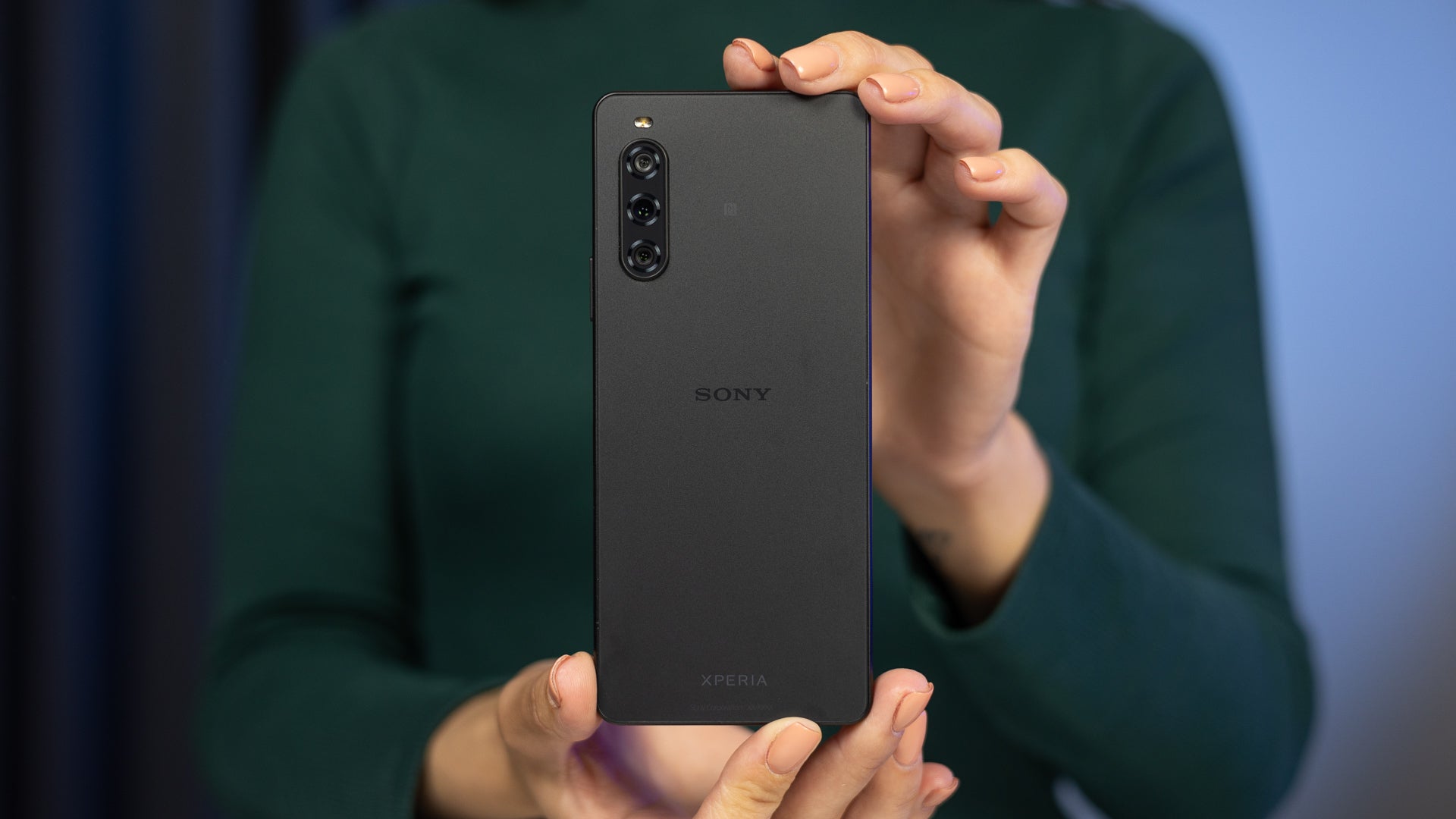
The statement above is pretty specific, but I’ll give Sony credit for trying to keep it on the Xperia 10 V by shedding 2 grams from the overall weight (159 grams vs. 161 grams). You know, to be a long-distance runner, you need to be lightweight! Aesthetically, the phone looks and feels the same as its predecessor – the body is plastic, but it doesn’t feel cheap, and the back doesn’t bend or creak when pushed down.
Sony Xperia 10 V Display
Shine on you crazy diamond
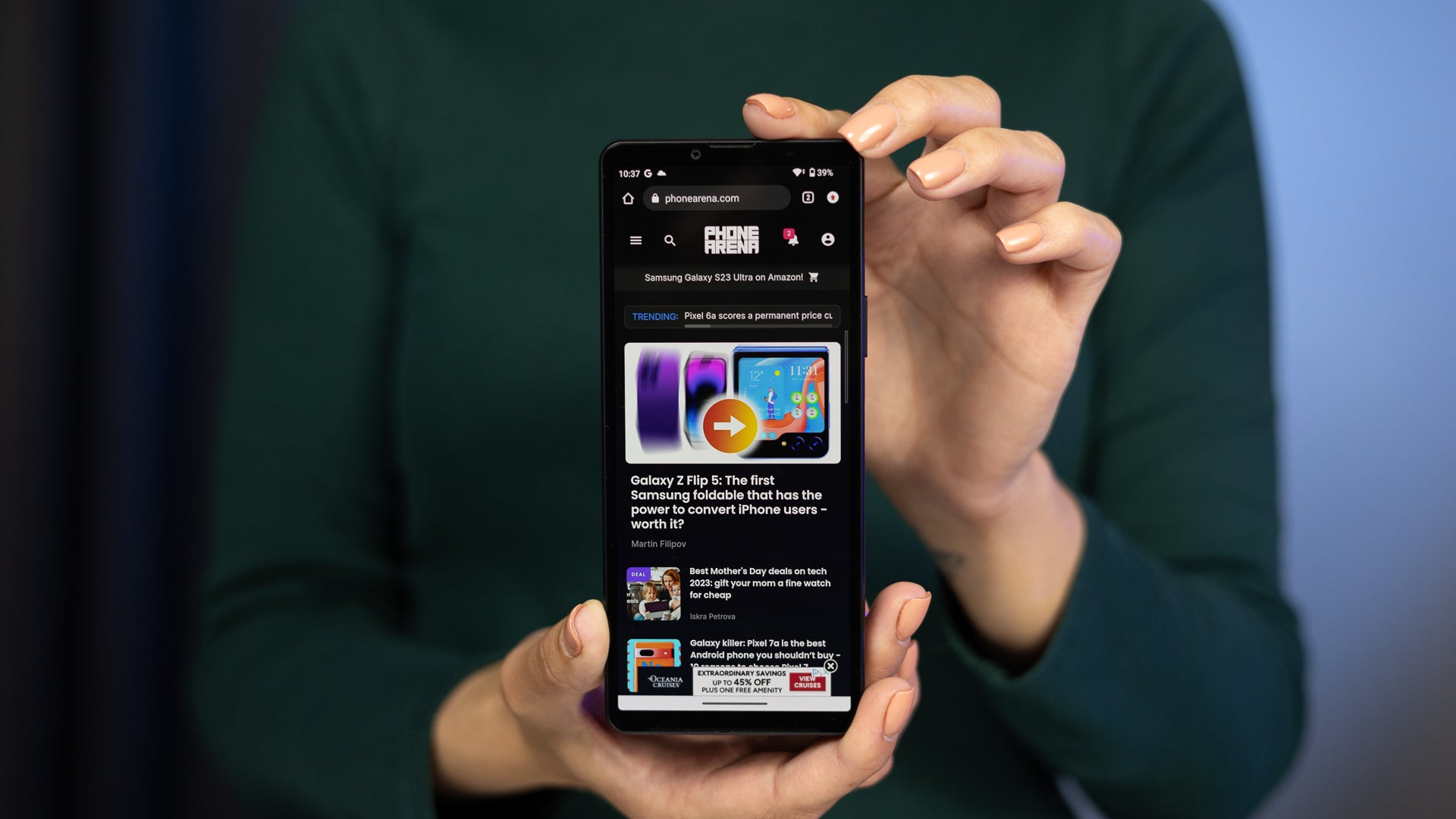
The 6.1-inch OLED display of the Xperia 10 V is very bright. I was able to achieve 972 nits in Max Auto, a score rivaling many flagships out there. The resolution is FHD+ (1080 x 2520 pixels), and it’s a 21:9 aspect ratio screen without interruptions such as notches and cutouts.
You have some customization options for the display, such as the color temperature, and image quality, but it’s basic stuff, and there’s no always-on option. Out of the box, the display is fairly well calibrated (for its class), but the glaring omission is the lack of a high display refresh rate – it’s capped at 60 Hz.
Sony Xperia 10 V Camera
Covering the basics
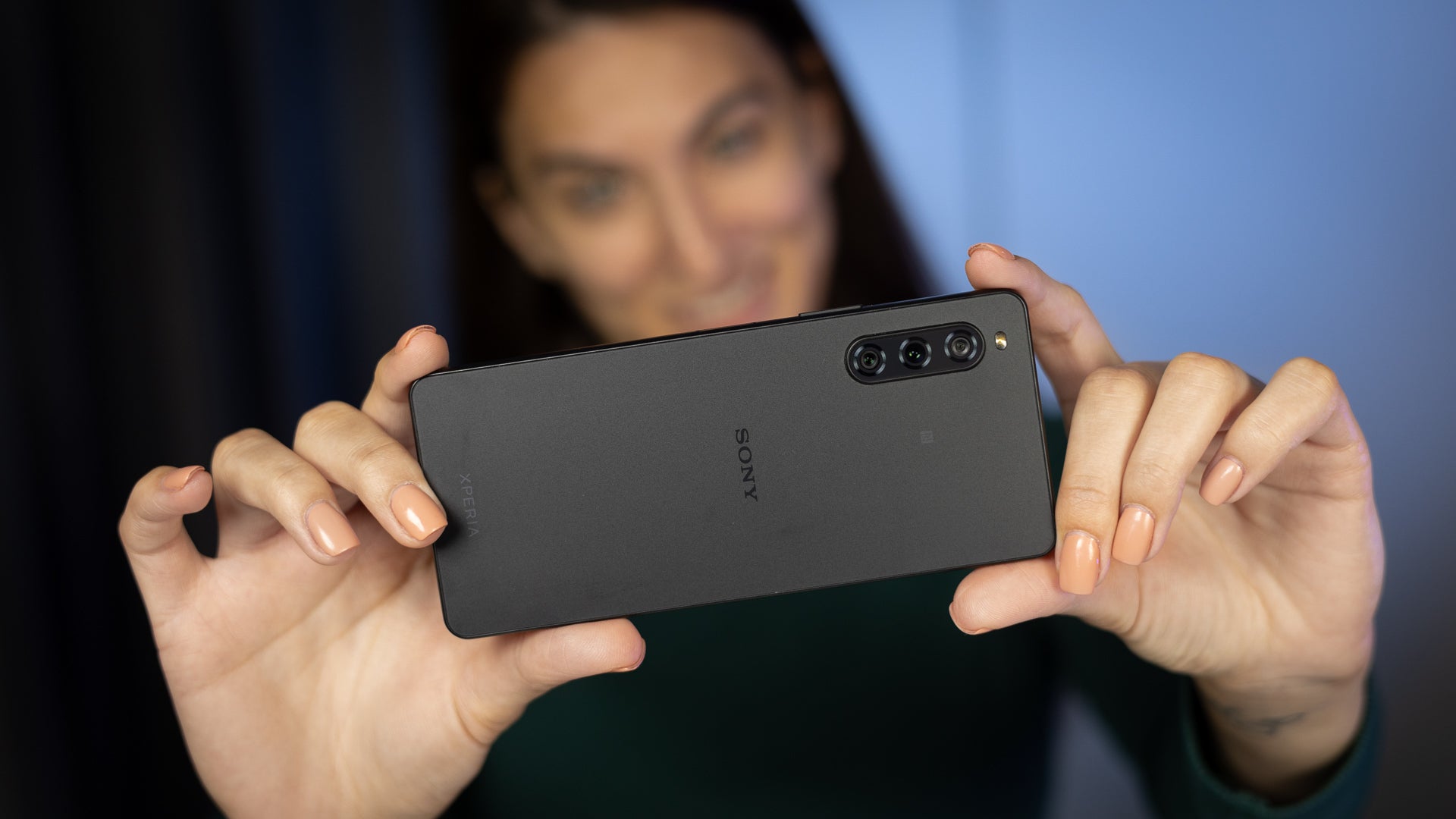
The Xperia 10 V sports a pretty flexible camera setup, again for its class. There’s the main 26mm wide angle lens sitting above a 1/2″ sensor (48MP, effectively 12MP with pixel binning), a 16mm ultrawide lens (I assume taken directly from the previous model), and a 54mm telephoto lens. The main camera also sports optical image stabilization for photos and videos.
Images taken with the main camera look pretty decent, especially in good lighting conditions, and there are enough details resolved. One thing to notice is that the Xperia 10 V has a tendency to overexpose the shots just a tad, resulting in softer and somewhat warmer pictures.
The telephoto camera has a focal length equivalent of 54 mm, and that’s great if you want to frame a closer shot but can’t physically move close enough. The quality is good, and the tonality of the images is very similar to that of the main camera. Again, there’s a slight tendency to overexpose the shots, I discovered that if you just snap the photo and skip tapping the screen to focus, you get better results.
The ultrawide camera is more of the same—nothing spectacular, but again, very close to the other two in quality, details resolved, and tonality. This camera produces shots with balanced exposure, and while it probably won’t win you any photography awards, it’s a solid performer.
The selfie camera is an 8MP snapper—nothing to write home about—but you can apply some bokeh to your selfies, making them much more pleasing. If you leave the slider in the middle (50% bokeh), you get the best results, in my opinion.
There’s a portrait mode on the main camera, and you can apply some computational bokeh via a slider in the menu. If your model is charming enough you can get away with the lack of computational power, but all jokes aside, the Xperia 10 V does a decent job on that front. Just don’t overdo it on the blur background side, as it might introduce artefacts in the final result.
On the video front, unfortunately, Sony has decided to keep the Snapdragon 695 which means – no 4K. The recording caps at 1080p@60fps, and while the results in that particular resolution look good, I would’ve loved to see at least 4K@30fps available. The image stabilization is quite good, too, but the autofocus is rather slow, so you have to wait for it and plan your frames ahead.
Sony Xperia 10 V Performance
Getting the job done
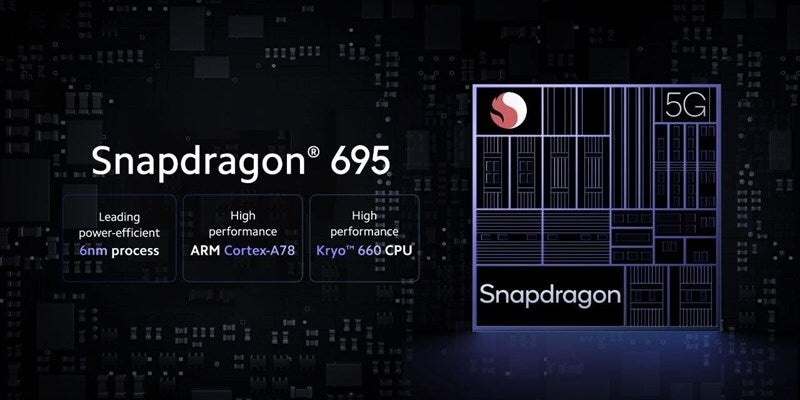
There’s a Snapdragon 695 5G chipset inside the Xperia 10 V, the same silicon powers the previous model. Even though the processor gets the job done, I would’ve liked to see something a tad more powerful and also capable of recording 4K videos.
To be fair, the phone works smoothly without much stutter, and if you notice some, it’s probably more to do with the display refresh rate than the processor alone. The synthetic benchmarks show a strange discrepancy in the 3DMark test, the previous model fared much better, which is strange given the same hardware inside both phones.
6GB of RAM is a healthy amount, and you can expand the 128GB of onboard storage via the microSD card slot, so there’s nothing to complain about on that front.
The side-mounted capacitive fingerprint reader is a mixed bag, I normally prefer those to their optical or ultrasonic under display counterparts, but all Xperia models have been struggling a bit with fingerprint scanner speed and accuracy over the years.
Sony Xperia 10 V Software
Can you Sense the Side?
The Xperia 10 V ships with Android 13 out of the box, and for those of you who like to rock a clean Android experience, there are little to no tweaks here. Unfortunately, Side Sense is still onboard, it’s a tiny little strip that you can activate by tapping twice near the edge of the display. You can use it to launch apps, quickly go to 21:9 split screen mode in order to multitask, and more.
Sony Xperia 10 V Battery
That’s Olympic Silver
The previous model topped our battery charts, and I expected the same from the Xperia 10 V. The phone sports the same 60Hz screen and the same Snapdragon 695 processor. The Xperia 10 V won the browsing contest with a mind-blowing score of more than 28 hours. That’s 7 hours more than the predecessor.
However, the video streaming test, and the 3D gaming test both returned around an hour less battery life. What gives?
Sony Xperia 10 V Audio Quality
Look at me when I’m talking to you
If you ask me, all smartphone speakers should be front-facing. Not only would this cure any imbalance between the left and right loudspeakers, but it would also result in a much more immersive multimedia experience, AND front-facing speakers are much harder to accidentally cover and mute.
Sony Xperia 10 V Alternatives
It’s a cold, cold world
The Xperia 10 V retails for 449 euros, or around 485 dollars. This puts the phone in a very dense spot, full of competitors. The obvious one is the new Galaxy A54 5G midranger from Samsung, clocking in at $449.99. The Galaxy comes with a 120Hz AMOLED screen, a microSD card slot, and a 5,000mAh battery.
Sony Xperia 10 V Summary
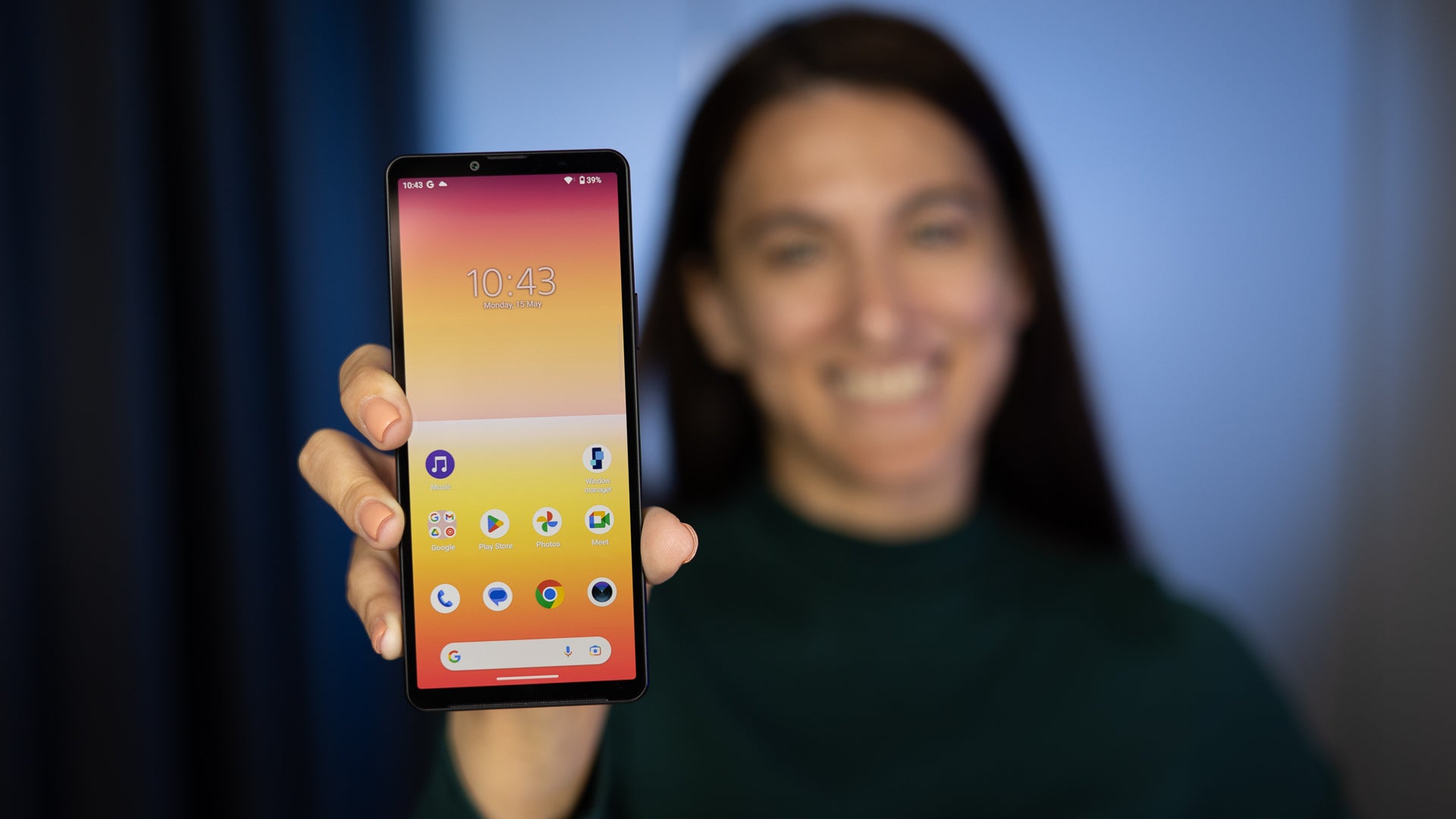
The Xperia 10 V is a great budget phone. It perfects an already great formula, adding stereo speakers, a brighter display, a slightly better main camera, and keeping the same stunning battery life in a very compact and lightweight package.
There are some omissions worth pointing out, though. The 60 Hz display refresh rate is a thing of the past, even on budget phones. The side-mounted fingerprint reader could use some R&D work, and the price tag is pushing things a bit. The Snapdragon 695 is getting old now, and the lack of 4K video recording and streaming is another blow to the Xperia 10 V.
But overall, if you like the Xperia aesthetics and the 21:9 screen, don’t care about refresh rates, and you need a “Mo Farah” rather than a “Usain Bolt”, this phone is a great option.


